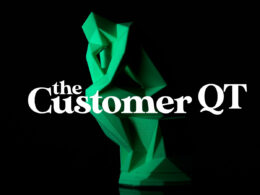When design thinking principles are applied to innovation and strategy, the success rate for innovation significantly improves. Design-led organizations, for example, Apple, Pepsi, IBM, Nike, Procter and Gamble, and SAP have beaten the S&P 500 over a 10-year time span by a remarkable 211% as per the 2015 Design Value Index made by the Design Management Institute and Motiv Strategies.
Design is changing the manner in which leading organizations make value. The focus of innovation has moved from engineering-driven to design-driven, from product-driven to client-driven, and from marketing-focused to user-experience-focused. For an increasing number of CEOs, design thinking is at the center of viable strategy development and organisational change.
The greatest main thrust is the accelerated pace of progress in business and society brought about by advances in innovation. As organizations become more software-driven and the pace of change increases, so does intricacy.
Most organizations are streamlined to execute and take care of an expressed issue. Creativity is tied in with finding the problem worth solving. A nonappearance of a scalable creative framework supports gradual advancement in lieu of disruptive innovation. As organizations make progress toward disruptive innovation, they should discover approaches to infuse and scale creativity across their companies.
Digital transformation is about the accelerated disruption of plans of action and requires a mentality move from problem-solving to problem finding. Presidents should be visionary pioneers: from setting up an internal culture that supports ideation, creation, and cycle, to building strategic partnerships to create new value propositions.
Understanding a client’s inspirations for utilizing a product or service is significant for creating something that works for the client. Take, for instance, a task IDEO conducted on management for a healthcare company.
IDEO’s team found that more conventional objectives like getting more fit and controlling sugar so as to keep away from medical issues weren’t fruitful in really inspiring patients to roll out sound improvements. Yet, defining social and emotional goals—like picking up the capacity to walk a 5K or hit the dance floor with your girl at her wedding—actuated an advancement attitude and really motivated people to change.
Outfitted with this information and a new frame, IDEO had the option to enable the organization to move past making a new medical device. Or maybe, IDEO helped them manufacture an adaptable application that rather solved a different challenge: How would we help individuals with diabetes carry on with their best lives?
Individuals need their interactions with technologies and other complex frameworks to be basic, instinctive, and pleasurable. When progressed sensibly, human-focused design upgrades the user experience with each touchpoint and powers the formation of products and services that profoundly resonate with customers. Design is empathic, and in this manner certainly drives a more mindful, human approach to deal with business.
Design thinking limits the vulnerability and danger of innovation by drawing in clients or users through a progression of models to learn, test, and refine ideas. Design masterminds depend on client insights picked up from real-world experiments, not simply historical data or market research. McKinsey reports the best outcomes to originate from continually mixing user research – quantitative, (for example, conjoint analysis) and qualitative, (for example, ethnographic meetings) with market-analytics.
One key to this is guaranteeing that your team has a growth mentality. The term alludes to the conviction that ability and skill come through practice, not through natural ability. With this frame, failure turns into an approach to learn, not verification of incompetency. For instance, one study demonstrated that members who were provoked to have a growth mindset achieved an intricate task better and all the more charmingly over members who were incited to have a “fixed” mentality.
Design thinking is an iterative non-linear cycle which includes building up a deep comprehension of clients’ or clients’ neglected needs within the context of a specific circumstance, comprehending information and finding experiences, addressing suspicions, investigating alternate points of view, rethinking issues into opportunities, producing imaginative thoughts, evaluating and picking ideas, testing through prototyping and experimentation, refining solutions, lastly implementing your innovation.
Toward the end of the procedure, designers at last need to make something that individuals do begin to look all starry eyed at. An effective final product regularly appears to be instinctive, as though the idea fully formed from the designer’s brain.
The objective of design thinking is to accomplish the forthright work to approve a solution that tends to a genuine issue while increasing a cozy comprehension of individuals who may utilize it, so there’s a higher probability of an effective product or service in the long run.
When you include clients as well as partners during the time spent defining the issue and in developing solutions, you have a greatly improved possibility of picking up responsibility for change, and getting buy-in for your innovation.
This article originally appeared in Analytics Insight. Photo by James Pond on Unsplash.












